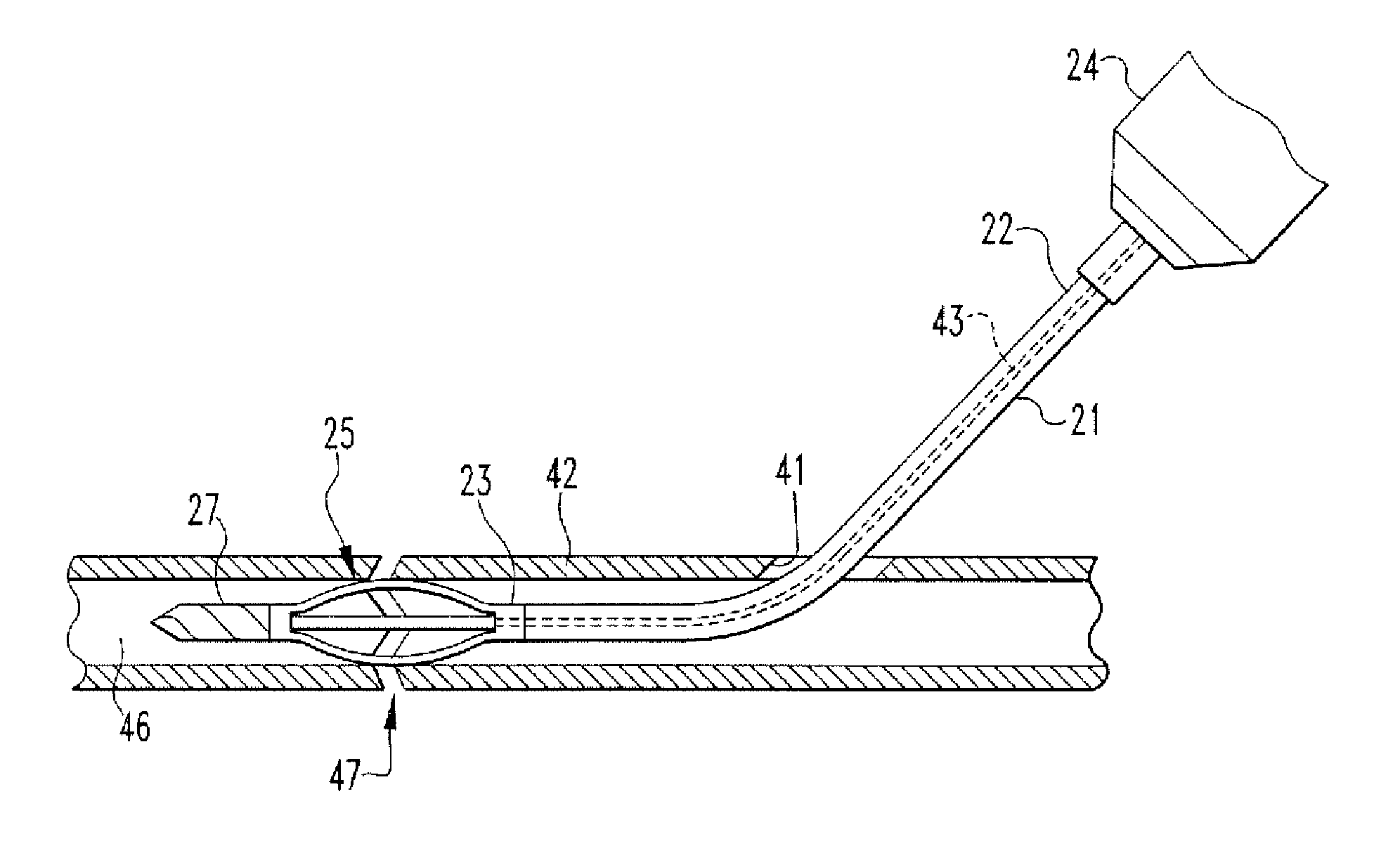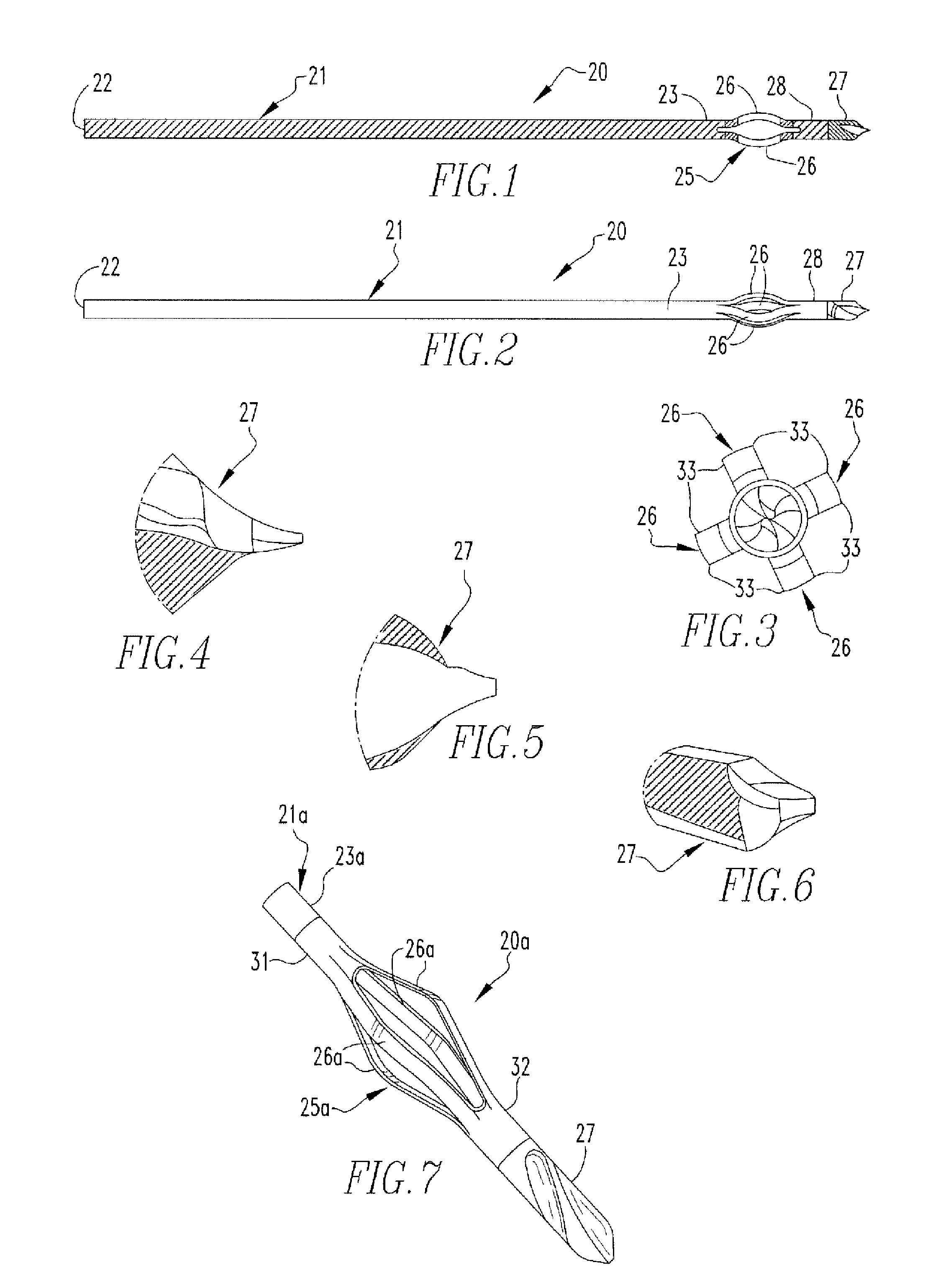Surgical instruments for cutting cavities in intramedullary canals
a surgical instrument and intramedullary canal technology, applied in the field of surgical instruments for cutting cavities in intramedullary canals, can solve the problems of unintentional reaching, damage to the cortical wall, and the problem of cutting cancellous bone without damaging the cortical wall or cortical bone structure, so as to achieve the effect of safe creation of cavities
- Summary
- Abstract
- Description
- Claims
- Application Information
AI Technical Summary
Benefits of technology
Problems solved by technology
Method used
Image
Examples
Embodiment Construction
[0035]Turning to FIG. 1, a surgical instrument 20 is shown that includes a flexible shaft 21 with a proximal end 22 and a distal end 23. The proximal end 22 of the shaft 21 may be coupled to a connector for connecting the shaft 21 to surgical drilling instrument, such as the drill 24 of FIG. 17. Alternatively, the proximal end 22 of the shaft 21 may be coupled to a handle or other suitable device for assisting or allowing a surgeon to rotate the instrument 20. Any of these components can also be made as an integral part of the instrument. The distal end 23 the shaft 21 may be coupled directly or indirectly to an expandable cutting device 25 which, as shown in FIGS. 1-3, includes four flexible cutting arms 26. The number of cutting arms 26 may vary but two or more cutting arms 26 are preferred. The cutting arms 26 may be coupled directly or indirectly to a distal nose section 27. For example, a distal shaft or collar section 28 may be disposed between the cutting arms 26 and the dist...
PUM
 Login to View More
Login to View More Abstract
Description
Claims
Application Information
 Login to View More
Login to View More - R&D
- Intellectual Property
- Life Sciences
- Materials
- Tech Scout
- Unparalleled Data Quality
- Higher Quality Content
- 60% Fewer Hallucinations
Browse by: Latest US Patents, China's latest patents, Technical Efficacy Thesaurus, Application Domain, Technology Topic, Popular Technical Reports.
© 2025 PatSnap. All rights reserved.Legal|Privacy policy|Modern Slavery Act Transparency Statement|Sitemap|About US| Contact US: help@patsnap.com



